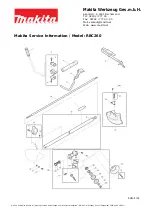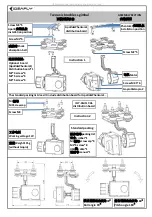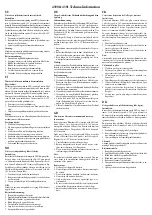
Telos
Rev B (Low Power Wireless Sensor Module)
Moteiv Corporation
Telos (Rev B) : PRELIMINARY Datasheet (12/5/2004)
Page 24 of 28
If expansion pin 10 (ADC3) is used for digital I/O instead of analog inputs,
R14
must be
populated with a 0 ohm resistor to enable the pin for digital I/O (GIO0) on the microcontroller.
R16 must be populated with a 0 ohm resistor to enable GIO1.
R14
and
R16
are located on the
top side of Telos between the USB controller and the radio.
The 6-pin IDC header also has an optional jumper,
R15
. By installing a 0 ohm resistor at
R15
,
GIO3 is directly connected to SVSout. By making GIO3 an input and using the SVS features of
the microcontroller, the SVSout function can be exported via pin 4 of
U28
.
A separate Supply Voltage Supervisor (SVS) 2-pin IDC header is provided underneath the USB
connector at position
U7
. The SVS header allows add-on boards to be built that connect to the
positive and negative battery terminals and the SVS pins in order to provide power the module
and use the microcontroller’s advanced SVS functionality for boost converters, solar systems,
and rechargeable systems. The SVS header is shown in Figure 24 and includes the SVSin and
SVSout pins from the microcontroller.
2
1
Analog Input 7 (ADC7)
DAC 1 /
SVS in
SVS out
2
1
Analog Input 7 (ADC7)
DAC 1 /
SVS in
SVS out
2
1
Analog Input 7 (ADC7)
DAC 1 /
SVS in
SVS out
Figure 24 : Functionality of the 2-pin Supply Voltage Supervisor connector (
U7
).
NOTE:
When
R14
/
R16
is populated (GIO0/GIO1 enabled), ADC3/ADC2 will not provide
reliable readings if an application reverts to using the ADC input instead of the digital I/O
port input on the microcontroller.
R14
/
R16
should be removed when using ADC3/ADC2 for
analog input.





































